Delve into the history, characteristics, and intriguing world of the Auvergne Horse, a breed known for its endurance, power, and versatility. From the rough mountain terrain of Central France, these horses trace a historical journey laden with change, adaptation, and survival. Explore the unique physical attributes that make this breed stand-out, and the temperament that sets them apart. Transitioning from work to recreation, the Auvergne horse shows impressive adaptability, complemented by impressive performance in various equestrian sports. Understanding the commitment to care, from feeding to grooming and healthcare, will shed light on this breed’s resilience and longevity. So saddle up, and get ready for a fascinating ride into the world of Auvergne horses.
Table of Contents (Horspedia)
Origin and History
Introducing the Auvergne Horse: A Storied Breed with Ancient Roots
A true product of the rugged, volcanic landscapes of Central France, the Auvergne Horse proudly represents thousands of years of a carefully preserved lineage. Its roots trace back to the Solutré horses, echoing an ancient connection visually apparent in the prehistoric cave paintings scattered throughout the Auvergne regions.
Originally, these horses inhabited the mountainous landscapes of Auvergne, surviving and thriving due to their inherent sturdiness and adaptability. As humans became more prevalent in these areas, around 4000 BC, they started to tame and domesticate the Auvergne horses, recognizing their potential for tackling the challenging farm tasks common to the rocky terrain.
Influencing not just their local region but Europe as a whole, the Auvergne Horse became an invaluable asset during the Roman era. Romans favored the breed for its stamina and resilience, employing these horses for tasks as varied as chariot racing and cavalry duties.
Fast-forward to the Middle Ages, the Auvergne Horses found their calling in different areas. Their compact size and agility were perfectly suited to a myriad of tasks, including farming, logging, pack work, and even charging into battle with the Knights of Auvergne.
Despite the advent of the Industrial Revolution reducing the demand for working animals in the 19th century, the Auvergne horses persevered, primarily thanks to their remote mountainous homelands which precluded large-scale farming machinery.
Today, preservation efforts have been instrumental in the survival of the Auvergne horse breed. A dedicated breeding program initiated in the 1990s helps to ensure its continuity, leading to a resurgence in its use, primarily for recreational and sport riding, courtesy of its amiable nature, robust physique, and endurance.
The storied journey of the Auvergne Horse, from prehistoric times to its role as a cornerstone of medieval history and resilience in modern times, is a testament to the rich history and culture of its home region. It serves as a symbol of the robust and adaptable spirit of the Auvergne region, with ongoing efforts ensuring its legacy will continue for future generations to value and appreciate.
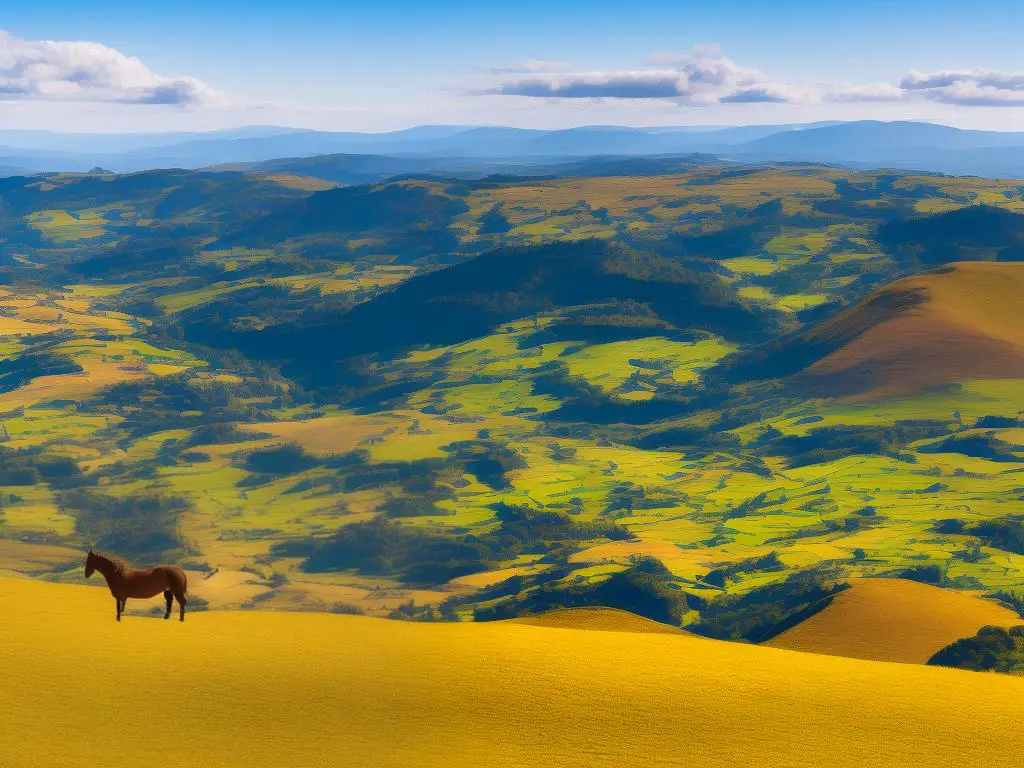
Physical Characteristics
Delving into the Physical Characteristics of the Auvergne Horse
The Auvergne Horse, as a breed originating from the Auvergne region of France, encompasses a balanced combination of historic prominence, stable temperament, and remarkable physical qualities.
Falling into the medium-sized breed category, the Auvergne horse typically stands between 1.48m and 1.62m high and typically weighs between 400 and 600 kilograms. Despite their moderate size, they pack a punch with their muscular physique and strong constitution.
Indisputably, the most standout feature of the Auvergne horse is its glossy, uniform black coat. While on rare occasions, it may lean toward dark brown or bay, black remains the defining color of this breed. This sleek black coat, harmonizing with the horse’s sturdy body, lends it an air of both power and grace.
The Auvergne Horse is ideally adapted to cope with diverse conditions, their bodies perfectly proportioned. With a strong neck, long sloping shoulders, and deep chest, these horses have compact and resilient legs, ideally designed for the unforgiving volcanic terrain of their home turf.
Their broad heads, often described as a “square” shape, boast expressive eyes and medium-sized ears, further enhancing their charm. Their well-rounded physical attributes make them equally adept at riding, transportation, and agricultural work.
Even though they’re sturdy, Auvergne horses are not particularly prone to many health conditions. They’re widely recognized for their resistance to illnesses and impressive lifespan, frequently living into their late twenties and even early thirties. As with all breeds, general equine health issues can crop up, but a regular schedule of vet visits and a well-maintained diet and exercise routine should ensure their quality of life remains high.
In conclusion, the Auvergne horse exemplifies the ideal trifecta of strength, versatility, and aesthetic appeal. With their shiny black coat, robust structure, and versatility across varied terrains, they truly stand as a breed apart.
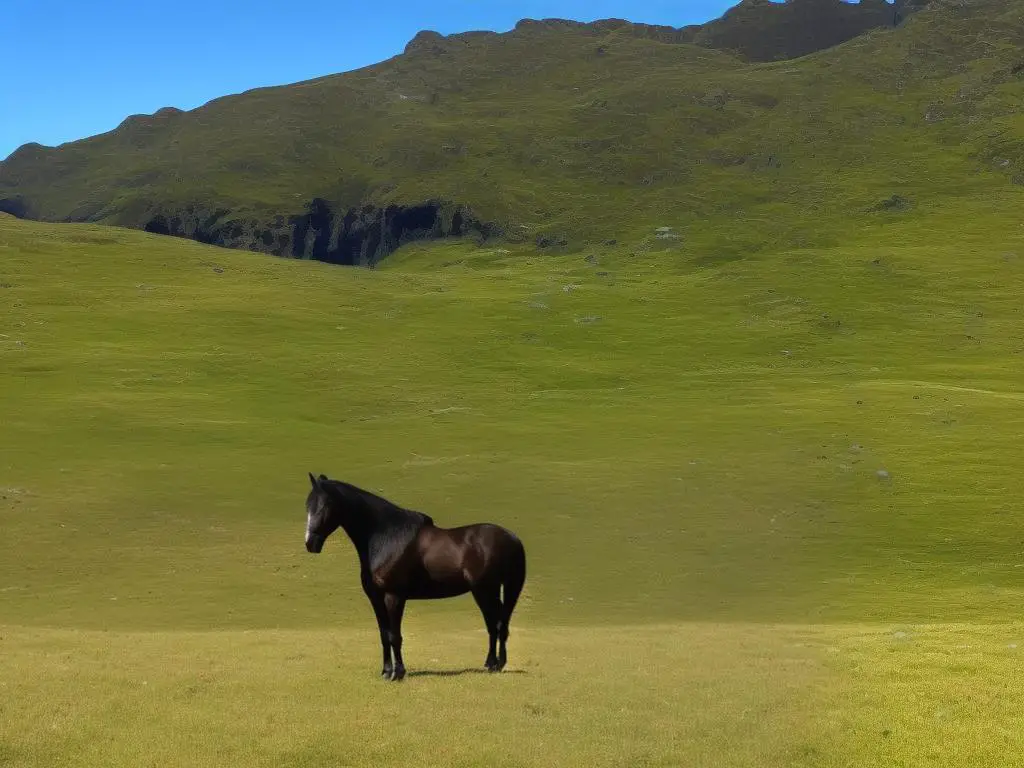
Behavior and Temperament
Insights into Behavior and Temperament: The Unique Personality of the Auvergne Horse
With traits crafting a robust and resilient breed, the Auvergne horses are unique in temperament, much of which is attributed to their roots in the mountains of Auvergne in central France.
They score high on adaptability, thanks to their experiences in their harsh native landscapes. This quality makes them perfect for any weather condition or terrain and is also advantageous for external activities like trekking and endurance riding, as well as diverse sporting events.
In terms of disposition, Auvergne horses are admired for their tranquil and gentle nature. Their remarkable friendliness coupled with an enduring patience make them ideal for inexperienced or young riders learning the equestrian ropes.
The Auvergne horse’s temperament extends not only to their peaceful demeanor but also their trainability. Known for their intelligence and desire to learn, they can quickly assimilate new skills, making them a suitable choice for various roles, from pleasure riding to competitive sports.
When around other horses, they display a social and peaceful demeanor, allowing for easy acclimation into larger herds and they’re often devoid of aggressive behaviors.
All factors considered, the Auvergne horse is personified by its composure, intelligence, and adaptability. Whether for recreational pursuits, competitions, or as a companion creature, their easy demeanor and impressively quick learning ability foster a deep connection with their human partners, thereby making them a beloved choice for equine enthusiasts worldwide.
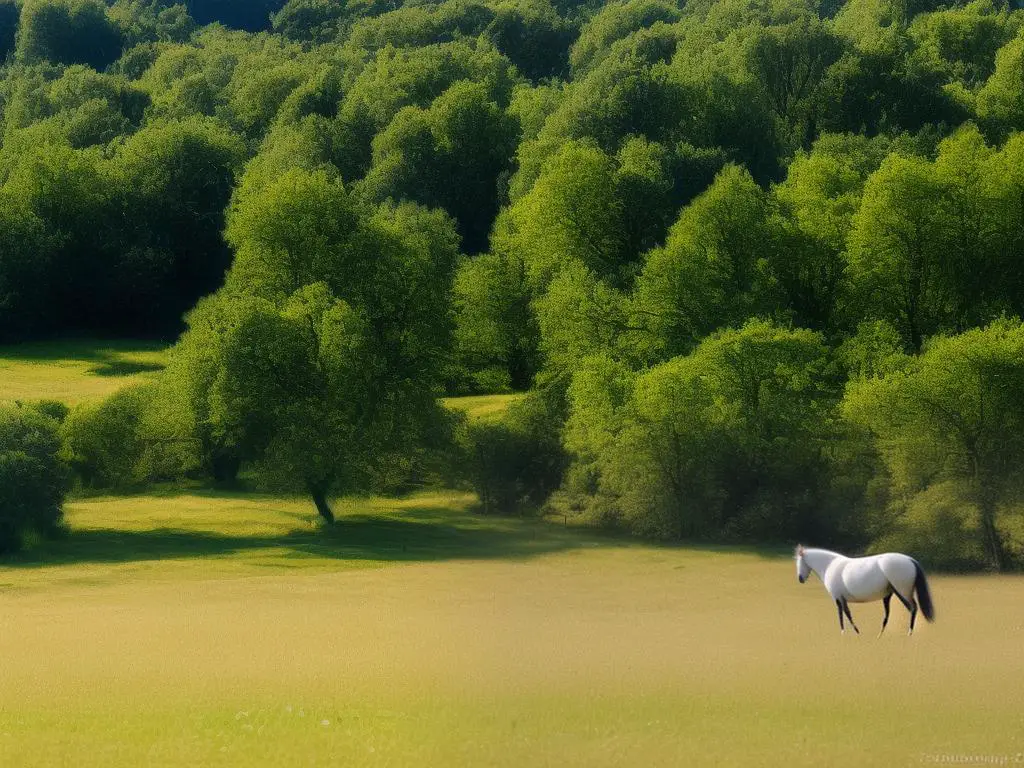
Uses and Performance
Diverse Uses and Applications of the Auvergne Horse
Originating from the Auvergne region in France, the Auvergne horse is primarily employed for riding and driving. Their versatility and capacity to adapt extend their use across numerous disciplines, like dressage, jumping, eventing, and carriage driving – they are particularly favored due to their strength and composure.
The Auvergne breed’s robust build and enduring nature also lend itself to practical work, making it ideal for endurance riding, farming, and various agricultural tasks. Their ancestors were utilized to transport heavy loads over Central France’s hilly landscapes, a trait that the current breed still excels at. Auvergne horses have a commendable ability to withstand harsh weather conditions and seamlessly adapt to diverse environments, making them the perfect workhorse for challenging terrains.
Performance in Equestrian Sports
Auvergne horses have a natural propensity for athletic disciplines due to their strength, agility, and endurance. They often perform well in Eventing, a sport that tests a horse’s versatility through dressage, cross-country, and show jumping phases. Their agility and power support their performance in jumping, while their naturally elevated gaits and engagement make them a good fit for dressage.
In endurance racing, the Auvergne horse is known for its exceptional stamina and resilience, traits that make it one of the most sought-after breeds in long-distance competitive riding. This breed’s unique ability to conserve energy and recover quickly from exertion contributes to its remarkable performance in endurance events.
Understanding the Auvergne Horse’s Suitability
The Auvergne horse breed, valued for their calm disposition and patient nature, make them an excellent option for beginners seeking a steady companion in their initial riding days. Their innate good manners and robust yet compliant character aids novice riders in gradually developing confidence.
However, these horses aren’t reserved solely for learners. On the contrary, experienced riders and competitive equestrians also admire the Auvergne horse for its versatility spanning across diverse equestrian activities. Efficient in activities ranging from dressage, show jumping to long-distance trail riding, and carriage driving, these are horses that can meet the demands of seasoned riders and advanced equestrian sports.
In summary, the Auvergne horse epitomizes a mix of sweet temperament, dependable stability, and diverse capabilities, making them an exemplary companion for all rider levels and scopes of expertise. This breed’s blend of strength, endurance, and adaptability enhances its appeal, documenting their exceptional worth across both pragmatic and leisurely settings.
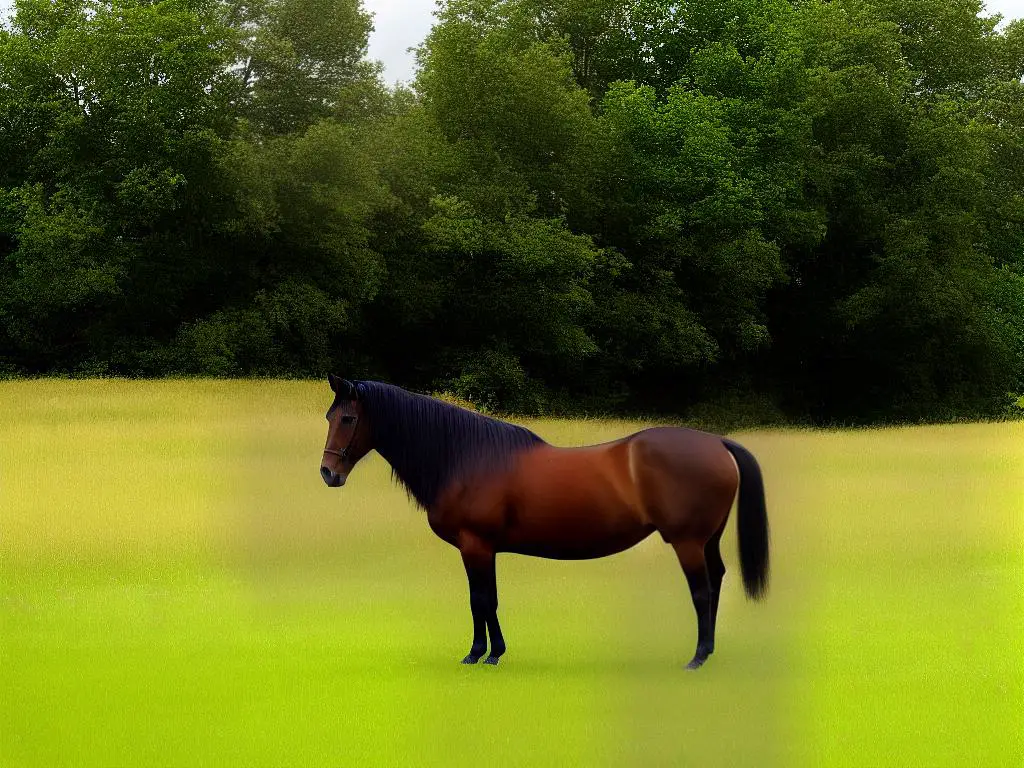
Caring for an Auvergne Horse
A Deeper Look into the Auvergne Horse Breed
Originating from France, the Auvergne horse is a relatively rare breed in North America. They are noteworthy for their sustained health and extended lifespan, factors that amplify their suitability for a multitude of disciplines. This breed’s amicable nature, combined with its graceful movement and capacity for both dressage and jumping, makes it an ideal selection not only for competition circuits, but also for recreational riding.
Feeding an Auvergne Horse
The dietary needs of an Auvergne horse don’t differ much from any other breed of horses. They thrive on a balanced diet of good quality hay or pasture, as well as a combination of grains and horse feed. However, it’s key to adjust their feed intake based on their level of work, age, and health condition. Also critical is constant access to fresh water. Some Auvergnes, in their native region, would have grazed on mineral rich volcanic soils, so ensuring ample mineral intake can be beneficial.
Grooming Needs
The Auvergne horse has a thick, durable coat that requires regular grooming. This includes brushing to remove dirt and loose hair, keeping their mane and tail untangled, and frequently checking their hooves. A lot of these horses live in environments that are subject to four true seasons, so careful attention to their coat and hoof condition across changing weather, such as hoof picking and care in the event of snow or rain, can be especially important.
Healthcare Essentials
Auvergne horses, like all horses, require routine healthcare to remain in their optimal shape. This includes regular visits from a certified equine veterinarian, who can provide vaccinations, deworming, dental checks, and overall health evaluations. It’s also important to establish a relationship with a professional farrier for routine hoof care.
Living Conditions
Auvergne horses are hardy and can adapt to a variety of living conditions – they are capable of living outdoors year-round, given they have enough shelter to protect from extremes of weather. However, these active horses benefit greatly from regular exercise and interaction with humans or other horses. A mix of pasture and stall living often suits them best, with ample access to open spaces for free movement and exploration.
The Commitment
Owning an Auvergne horse, or any horse for that matter, requires a significant time and financial commitment. From daily feeding and grooming, to arranging healthcare, to regular exercise — horse ownership is a full-time endeavor. But the rewards of the Auvergne horse’s companionship and versatility, coupled with their capability to perform in various equitation disciplines and their long-lived nature, often make the commitment a worthwhile endeavor.
Remember, no matter the breed of the horse, ownership brings great responsibility, but the rewards of a loyal and impressive equine companion like the Auvergne, can not be underestimated.
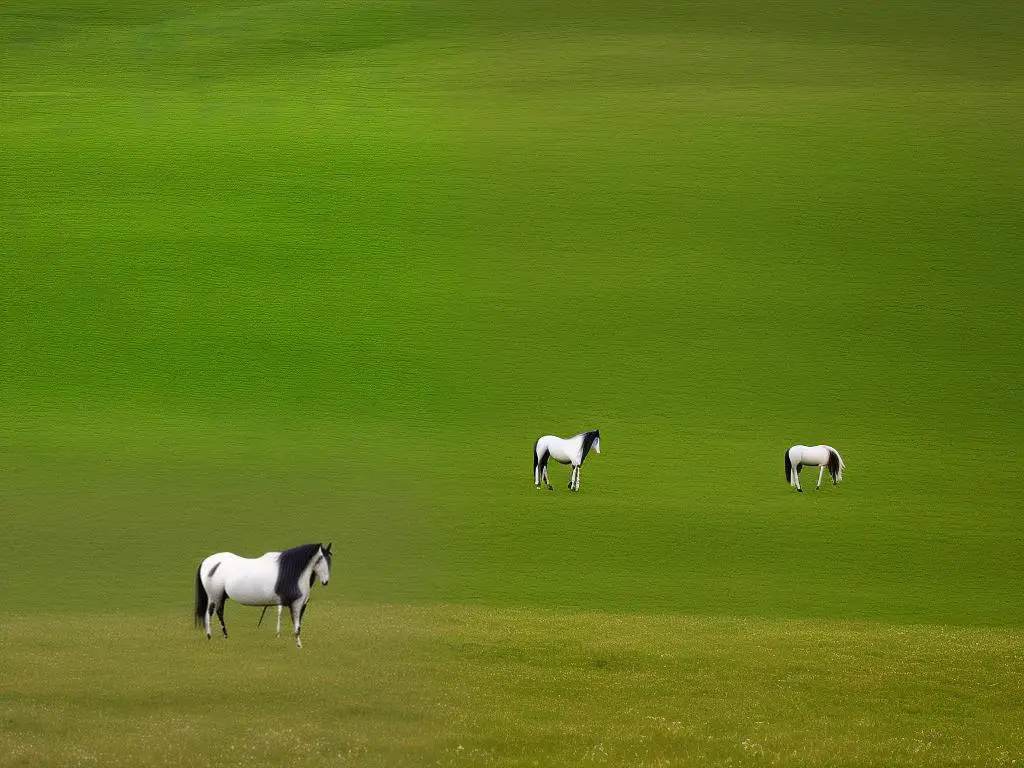
Through understanding the facets of the Auvergne Horse, we gain a unique insight into not just the history and development of this breed, but also the deep connection and dependency that humans have with our equine companions. Be it strong physical features, bold temperament, or remarkable performances, each aspect contributes to developing a profound respect and appreciation for this breed. Above all, comprehending the level of care that these horses command imparts significant learnings about the commitment required to maintain their health and wellbeing. The Auvergne horse, a testament of enduring versatility and strength, continues to captivate horse enthusiasts and demonstrate the unfaltering bond between man and horse.
